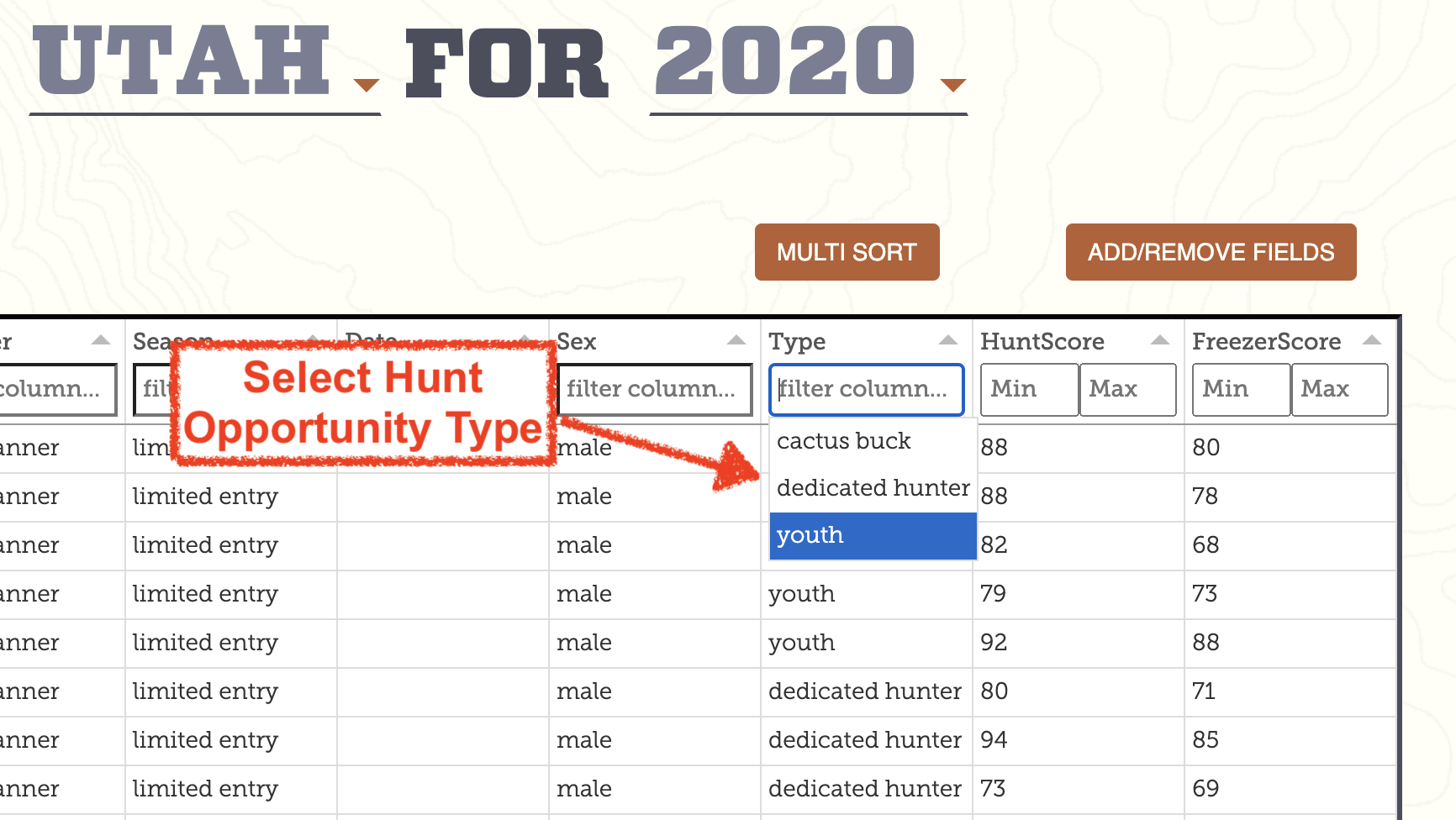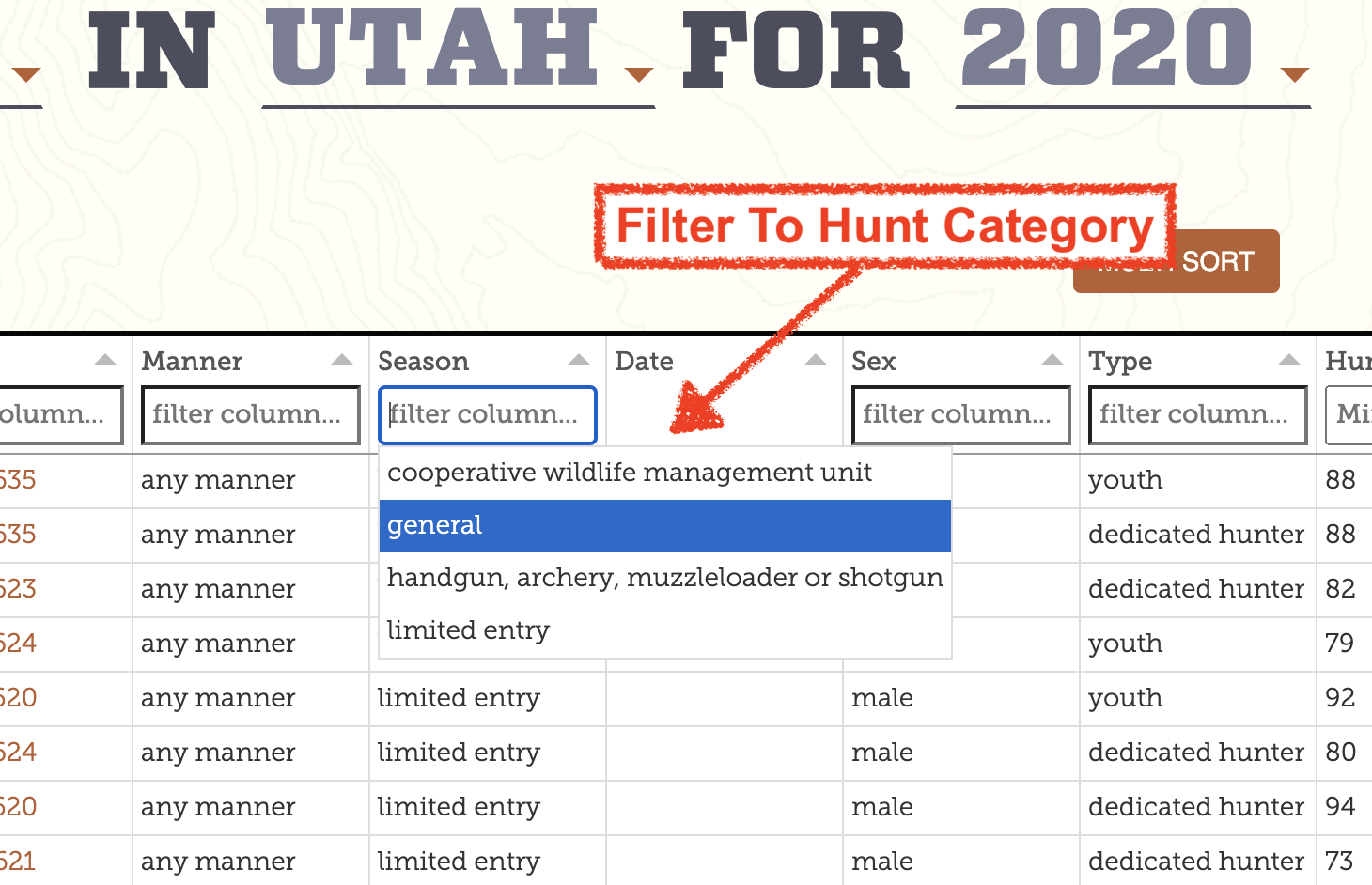Utah Big Game Draw
In 2020 Utah became the latest state in the union to pass a constitutional right to hunt and fish. 75% of Utahns voted yes, thus establishing hunting and fishing as a fundamental right for residents of the state. Utah's Division of Wildlife Resources is responsible for managing the wildlife in the state to ensure Utahns continue to have adequte game populations to exercicse their rights. So whether your a resident or nonresident of the state, to hunt big game you'll need to understand the big game draw process.
Limited Draw vs. Other Opportunities

In addition to limited draw tags which we cover in this post, Utah has cooperative wildlife management unit (CWMU) hunts, over-the-counter elk hunting opportunities and limited anterless cow elk and doe pronghorn tags which can be applied for a drawn after the limited draw. The limited anterless/doe draw occurs after the primary big game draw. OTC license go on sale after all limited entry tags are awarded so the decision to hunt OTC can be made after an unsuccessful application season. CWMU hunts allow access to private land through a public-private partnership agreement. Residents can apply and be drawn for CWMU permits and nonresidents can purchase permits directly from the landowner or operator. Visit Utah's page dedicated to the CWMU program to learn more.
Resident vs. NonResident Opportunities
Residents and nonresidents have slightly different application opportunities for limited draw buck deer, bull elk and buck pronghorn hunts and once-in-a-lifetime hunts for moose, bison, sheep and goat. See the table below for the breakdown:
| Application Opportunity | Limited Deer, Elk and Pronghorn | Lifetime Hunts | Maximum Permits | |
| Residents | Can apply for ONE of the following |
Buck Deer OR Bull Elk OR Buck Pronghorn |
Moose OR Bison OR Sheep OR Goat |
Only one across all applications |
| NonResidents | Can apply for ALL of the following |
Buck Deer AND Bull Elk AND Buck Pronghorn |
Moose AND Bison AND Sheep AND Goat |
Only one across all applications |
Overall, Residents can submit 2 applications per year in the above drawings. However, they may only draw one permit. Nonresidents can submit up to 7 applications but are also limited to drawing one permit. Since applicants are limited to drawing only a single permit across these hunts, it is important to understand the order in which the draw takes place (covered below).

There are also General Buck Deer drawings for several categories of hunters. In addition to applying for the above hunts, residents and nonresidents can apply to the below general buck deer hunts for which they qualify:
- Dedicated Hunter - This program allows a limited number of hunters to perform service and attend classes and in return have access to better quality hunts across multiple weapon seasons. See Utah's Dedicated Hunter Program for more details.
- Lifetime License Holder - This program no longer accepts enrolles but for those who purchased a lifetime license in the past, they are guranteed a permit so long as quota remains.
- Youth - Allows youth 17 and younger to be drawn in a separate pool from adults. 20% of the quota is allocated to youth.
- General - This category is for anyone who doesn't qualify for the previous progams.
It is important to note that if a hunter draws any of the limited entry permits for any of the species noted above, they cannot draw a general buck deer permit.
Waiting Periods
Limited entry buck deer, bull elk and buck pronghorn hunts in Utah have a waiting period once drawn. A waiting period is a length of time an hunter is ineligible to apply for a hunt after having successfully drawn a hunt permit. Limited entry hunt waiting periods are listed below:
- limited-entry buck deer: 5 years
- limited-entry bull elk: 5 years
- limited-entry buck pronghorn: 2 years
During the waiting period, a hunter is also ineligible to purchase bonus points. So make the most of the hunt if you are drawn!
Bonus Points and 50/50 Split Allocation
For limited entry hunts, Utah employs a bonus point system. In a bonus point system, every hunter who applies has a chance to draw a permit. A hunters chance of drawing typically increases with the number of bonus points they have accrued. Utah splits tag allocation for individual hunts. 50% of tags go to high point holders the other 50% are drawn randomly.
For each bonus point an application has for a hunt category, the application recieves a random number. So if the application has 4 bonus points going into the draw for buck deer, they will receive 4 random numbers. Additionally, they will receive a random number for the current year. Once all applicants for a hunt category have received their random numbers, these random numbers are sorted.
Suppose a particular limited entry hunt had 4 tags available. 2 would be allocated to high point holders and 2 randomly. For this hunt lets assume there are 5 applicants holding 9 bonus points each. To determine which 2 of the 5 high point holders receive licenses, the high point holders random numbers would be sorted and the 2 applicants with the lowest numbers would receive tags.
For the 2 remaining tags, all applicants for the hunt would have their random numbers sorted and the two applicants with the lowest random numbers would receive tags.
Preference Points
In a preference point drawing, tags are allocated to hunters with the highest number of points until all tags are allocated. For all intents and purposes, the preference point drawing functions the same as the bonus point drawing allocated to high point holders. Utah uses a preference point process for allocating tags in the following big game draws:
- General Buck Deer
- Antlerless Deer
- Antlerless Elk
- Doe Pronghorn
Draw Order
Since applicants are restricted to drawing one tag in the primary big game draw but can apply for multiple draw categories, it is important to know the order in which hunt categories are drawn. Utah's big game draw is conducted in the following order:
- limited entry, cooperative wildlife management unit and management buck deer
- limited entry, cooperative wildlife management unit and management bull elk
- limited entry and cooperative wildlife management unit buck pronghorn
- once-in-a-lifetime
- general buck deer – lifetime license
- general buck deer – dedicated hunter
- general buck deer - youth
- general buck deer
- youth general any bull elk
Once-in-a-lifetime hunts have generally very low odds (less than 1%). If an applicant holds enough bonus points and/or preference points across multiple species to more than likely draw a tag in the high point portion of the bonus point draw or pref. point draw they need to consider their application choices in light of the draw order.
Hunt Choices
When applying for a tag within a hunt category, an applicant may select mulitple hunts choices. The applicant ranks their choices based on preference. When the draw is performed, all first choice applicants to a hunt are considered first. If there are fewer 1st choice applicants than tags, then 2nd choice applicants will be considered. This process continues until either all tags have been allocated or all applicants have been considered. Most hunts allocated all available tags in the 1st choice portion of the draw.
Conclusion
Utah's draw system is one of the more complicated systems in the Western US. However, understanding the mechanics of the draw and having the right hunt planning tool can help make applying easy. In most cases an applicant can only draw a single limited draw tag each year, This makes it all the more important that applicants are maximizing their chance at hunting opportunities by selecting the right hunts in the appropriate choice order.